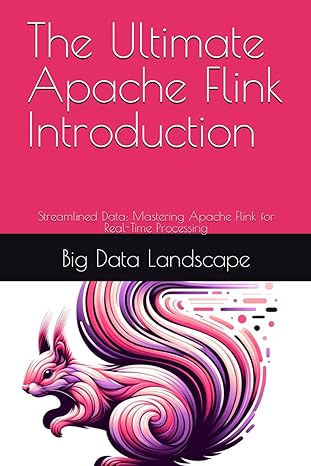Question
fill in the blanks of java program import java.awt.Color; import java.awt.Graphics; class Disk extends Point { protected int radius; public Vect velocity; public Color borderColor;
fill in the blanks of java program
import java.awt.Color;
import java.awt.Graphics;
class Disk extends Point {
protected int radius;
public Vect velocity;
public Color borderColor;
public boolean anchored = false; // default value
public Disk(int x, int y, int radius, Color color ) {
// you write: call constructor with (int, int, int, Color, Color). The last two params are just color
this(x,y,color)
}
public Disk(int radius, Color color) {
// you write: call the default Point constructor
// you write: call init
Super();
}
Disk(int x, int y, int radius, Vect velocity, Color c) {
// you write: call the four parameter constructor.
// you write: set the velocity
}
public Disk(int x, int y, int radius, Color color, Color borderColor) {
// you write: call the Point 2-parameter constructor
// you write: call init
}
private void init(int radius, Color color, Color borderColor) {
// you write: initialize values, set velocity to zero.
}
void copyDisk(Disk d) {
// you write: set all values of this to ds values.
}
public Disk(Disk[] otherDisks) // create a random anchored disk, avoiding overlaps with other disks.
{
// Nothing to do here but understand how it works.
boolean collision;
Disk temp;
anchored = true;
int tries, maxTries = 10000, minRadius = 40;
do {
tries = 0;
do {
temp = new Disk(
Util.getRandom(minX, maxX),
Util.getRandom(minY,maxY),
Util.getRandom(minRadius, minRadius + (maxX - minX)/9),
Util.getDarkColor() ,
Color.LIGHT_GRAY);
temp.anchored = true;
collision = false;
for (int j = 0; j < otherDisks.length; j++) {
Disk other = otherDisks[j];
if (other != null && other.collision(temp))
collision = true;
}
tries++;
} while (collision && tries < maxTries);
minRadius--;
//if (minRadius < 40) System.out.println(minRadius);
} while (collision && minRadius >= 1);
copyDisk(temp);
}
public boolean collision(Disk d) {
double r = getDistance(d);
return r <= radius + d.radius && d!= this;
}
public void draw(Graphics g, Color c, Color border) {
// everything in here is written for you but you should understand how it works.
Color temp = g.getColor(); // save color
g.setColor(c); // temporarily change color
int d = Util.round(2*radius);
g.fillOval(Util.round(x-radius), Util.round(y-radius), d,d);
if (!this.color.equals(this.borderColor)) {
g.setColor(border);
g.drawOval(Util.round(x-radius), Util.round(y-radius), d,d);
}
g.setColor(temp); // restore color
}
public void draw(Graphics g) {
// you write: call the draw above with color and borderColor.
g.setColor(Color.blue)
}
public void setRadius(int radius) {
// you write: set the radius
radius = radius;
}
public double getArea() {
// you write: return the area
}
public void erase(Graphics g) {
draw(g,background, background);
}
public void move() {
// you write: update velocity if disk boundary crosses border and is going it that direction
move(velocity); // calls Point move
}
public void move(Disk [] disks) {
if (anchored) return;
for (int i = 0; i < disks.length; i++)
if (disks[i] != null)
handleCollision(disks[i]);
double speed = this.velocity.getLength();
if (speed > 6) this.velocity.setLength(speed * 0.99); // some friction for super fast speeds
move();
}
public void elasticCollision(Disk d) {
// you write this (about 15 to 20 lines of code)
}
public void handleCollision(Disk d) {
if (collision(d))
if (!d.anchored) elasticCollision(d);
else {
// you write: bounce of anchored disk.
}
}
public String toString() {
// you write: call toString of Point then append velocity in square brackets e.g. (44,55) [0.2,3.22]
// remember, there is already a Velocity.toString().
}
}
_______________________________point___________________________
import java.awt.Color;
import java.awt.Graphics;
public class Point {
protected static int maxX = 400, maxY = 400, minX = 0, minY = 0; //default values
protected double x,y;
public static Color background;
public Color color;
public Point() {
this(Util.getRandom(minX, maxX), Util.getRandom(minX, maxX)); // random point
}
public Point(double x, double y) {
setX(x);
setY(y);
}
public double getX() {return x;}
public double getY() {return y;}
public void setX(double x) {
this.x = Math.min(maxX, Math.max(minX, x));
}
public void setY(double y) {
this.y = Math.min(maxY, Math.max(minY, y));
}
static public void setMaxX(int maxX) {
if (maxX < minX) maxX = minX;
Point.maxX = maxX;
}
static public void setMaxY(int maxY) {
if (maxY < minY) maxY = minY;
Point.maxY = maxY;
}
static public void setMinX(int minX) {
if (minX > maxX) minX = maxX;
Point.minX = minX;
}
static public void setMinY(int minY) {
if (minY > maxY) minY = maxY;
Point.minY = minY;
}
public static int getMaxX() {return maxX;}
public static int getMaxY() {return maxY;}
public static int getMinX() {return minX;}
public static int getMinY() {return minY;}
public int roundX() {return Util.round(x);}
public int roundY() {return Util.round(y);}
public String toString() {return "(" + Util.round(x,2) + "," + Util.round(y ,2)+ ")";}
public void draw(Graphics g) {
Graphics temp = g;
g.fillOval(roundX()-1,roundY()-1,2,2);
}
public void move(Vect a) {
setX(x + a.vx);
setY(y + a.vy);
}
public boolean equals(Object o) {
if (o == null || o.getClass() != this.getClass())
return false;
Point temp = (Point) o;
return temp.x == x && temp.y == y;
}
public double getDistance(Point p) {
double dx = p.x - x, dy = p.y - y;
return Math.sqrt(dx*dx + dy*dy);
}
}
Step by Step Solution
There are 3 Steps involved in it
Step: 1

Get Instant Access to Expert-Tailored Solutions
See step-by-step solutions with expert insights and AI powered tools for academic success
Step: 2

Step: 3

Ace Your Homework with AI
Get the answers you need in no time with our AI-driven, step-by-step assistance
Get Started


